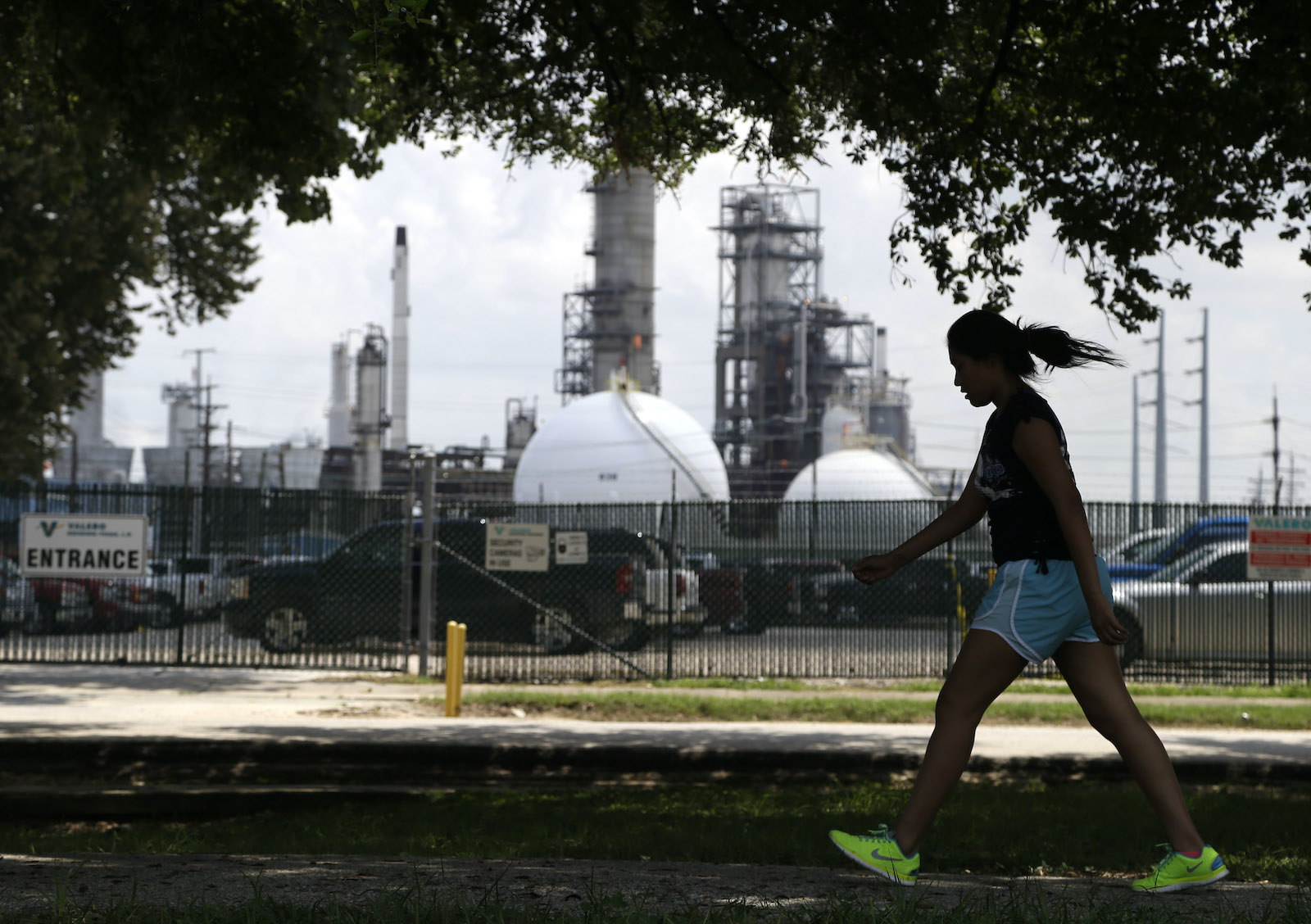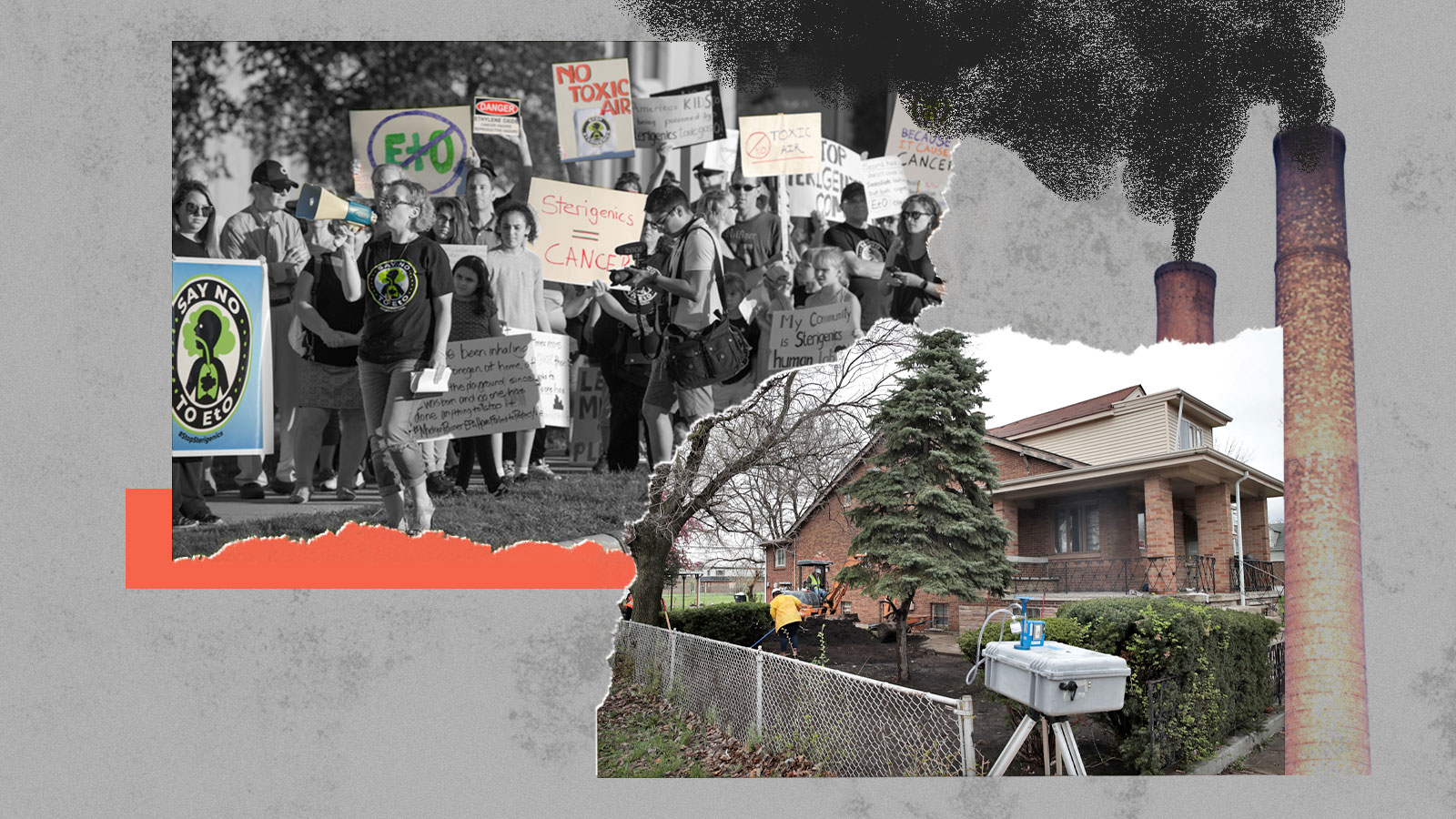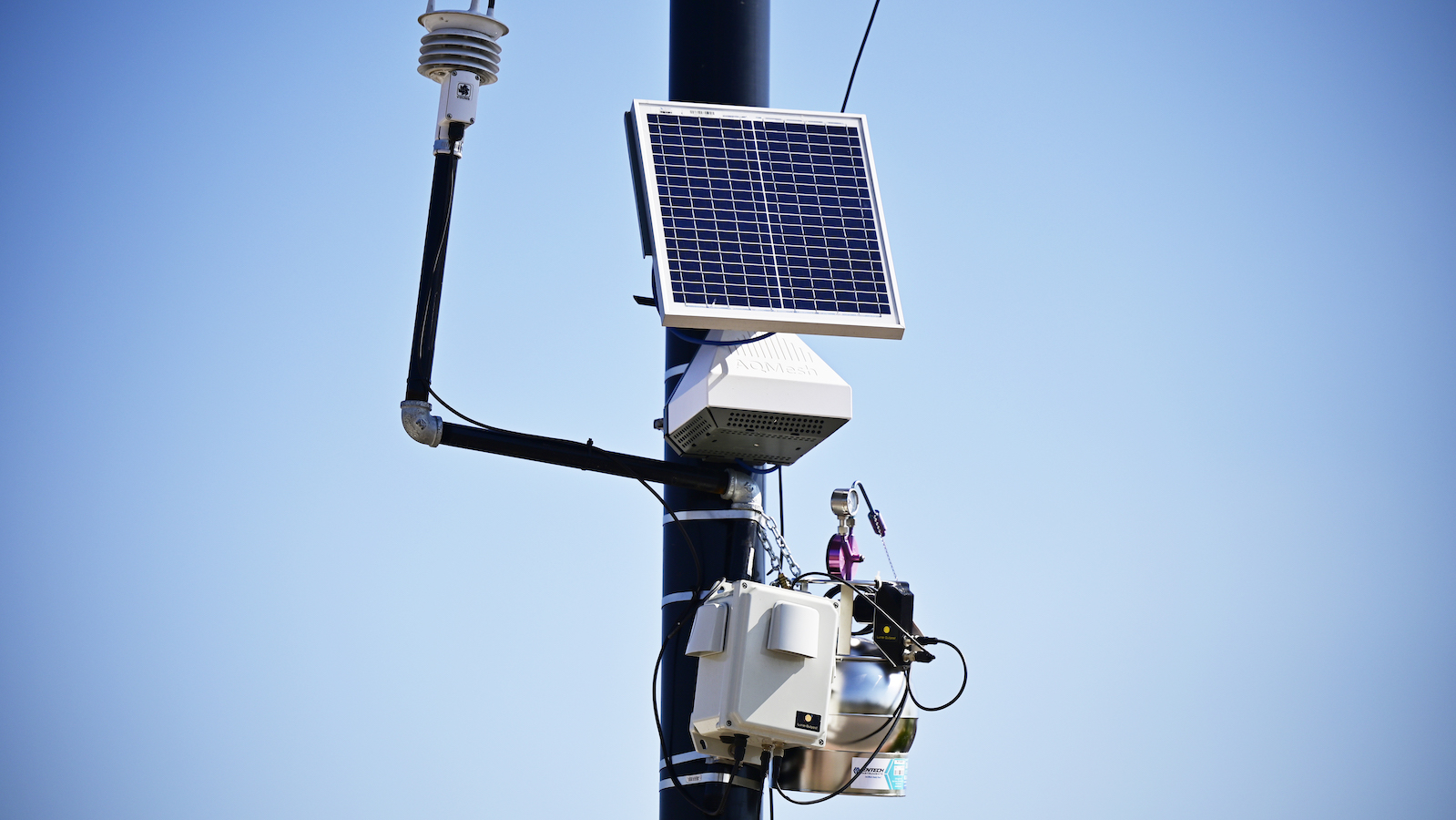In the late summer of 2018, hundreds of residents packed into the community center of an affluent Chicago suburb to call for the closure of a nearby industrial facility. For decades, the international company Sterigenics had been using the compound ethylene oxide to fumigate medical devices such as catheters and surgical trays at its plant in Willowbrook, Illinois. But in 2016, the EPA published an updated risk assessment for the chemical, finding it to be 30 times more toxic for adults and 60 times more toxic for children than previously estimated.
In response to these findings, the Environmental Protection Agency’s Region 5 office, which covers the Midwest, began collecting air samples around the Sterigenics plant. The results of their investigation found that the 19,000 people living within a one-mile radius of the facility were exposed to a significantly elevated risk of cancer from ethylene oxide. News of the study spread rapidly in the community, and Willowbrook Mayor Frank Trilla organized a public forum in August 2018.
“Two years ago I was diagnosed with non-Hodgkin’s lymphoma,” one man told the Sterigenics spokesperson at the meeting. (Studies have linked the cancer to ethylene oxide exposure.) “They’ve taken my bladder, my prostate, and 26 lymph nodes. And I’ll see you in court,” he finished to a room full of applause.
Sterigenics assured the public that they would slash emissions, but months later, the EPA’s monitors were still picking up high levels of ethylene oxide. In February 2019, the state of Illinois ordered the company to cease its operations in Willowbrook while state and federal authorities continued their investigation of its public health risks. Then in September, the company announced that it would be shutting down its Willowbrook operation for good.
The Sterigenics story offers an example of the power of air monitoring to identify and resolve problems caused by air pollution. But the way it played out is an exception. Other communities around the country exposed to ethylene oxide haven’t even seen government regulators collect air samples to gauge their exposure.
State and federal environmental regulators rarely test around the country’s largest industrial facilities for “toxic air pollutants,” a group of 188 chemicals known or suspected to cause cancer or other serious health effects. The EPA’s “network” of air monitors that collects information about these chemicals is sparse: There are only 34; none of them in the heavily industrialized corridors of Texas or Louisiana. And with the exception of petroleum refineries, most companies aren’t required to monitor the air along the outskirts of their facilities. As a result, many people living near industrial sites have no idea what they’re breathing every day.

The Inflation Reduction Act, signed by President Joe Biden in August, has a potential fix: allocating millions of dollars to support air monitoring by the EPA, state and local governments, and nonprofit organizations. These provisions have been hailed as major wins for areas of the country that have been kept in the dark for decades about the quality of the air they breathe.
But funds for more air monitoring on their own don’t fix the biggest problem standing in the way of communities demanding cleaner air, former EPA staffers and environmental advocates told Grist. Even when air monitors pick up concerning levels of toxic pollutants in neighborhoods near industrial facilities, no law requires state environmental agencies or the EPA to do anything about it. It’s often only after people organize and file lawsuits that regulators swing into action, experts said, and that process can take years.
“Information is power, but it requires action. It requires next steps,” said Scott Throwe, a former senior staffer in the EPA’s Office of Enforcement and Compliance Assurance. “Ultimately, [air monitoring data] is only as valuable as the actions that are taken to address the emissions that are being released.”
State and federal agencies that monitor for air pollution most frequently direct their efforts toward six “criteria pollutants”: carbon monoxide, lead, ozone, sulfur dioxide, nitrogen oxide, and particulate matter. These substances originate from a number of different sources including vehicles, industrial operations, and wildfires. The Clean Air Act says that if the concentration of one of these pollutants reaches a certain threshold, regulators must ensure that no new sources are added to the area.
But the 188 toxic air pollutants don’t receive the same treatment. Instead, companies that emit them are required to add special technologies like scrubbers to minimize the amount of pollution that can escape. When these technologies malfunction or become less efficient as they age, people who live nearby may have no idea that the quality of their air is deteriorating. This is especially true for colorless and odorless chemicals like ethylene oxide, which can only be detected using special equipment.
That’s why some community groups and advocacy organizations have stepped up their demands for air monitors in recent years.
“We need the data so we can figure out next steps and so we can apply that pressure,” said Sheila Sherna, a policy director at the Rio Grande International Study Center and former air quality investigator at the Texas Commission on Environmental Quality. Her organization has been petitioning the EPA for air monitoring around a medical sterilization facility in Laredo, Texas that releases thousands of pounds of ethylene oxide a year.
The EPA has acknowledged the need for more air monitoring. Last year, the agency’s administrator, Michael Reagan, visited a number of southern towns facing high levels of industrial air pollution. In Reserve, Louisiana, a town perched on the bank of the Mississippi River in the state’s industrial corridor, residents took him by Fifth Ward Elementary, a school that sits in the shadow of Denka’s sprawling chemical complex that emits chloroprene, a substance linked to skin and liver cancer. In response to the concerns of those he met in Louisiana and Texas, Reagan announced a multi-pronged strategy for addressing the pollution, including more air monitoring.
But using air samples to identify a toxic hotspot is just a “first step” to decreasing toxic emissions, said Throwe. Inspectors must next develop a targeting strategy, conduct inspections, and analyze the data to determine whether a facility is out of compliance. The speed with which this process occurs (and whether it occurs at all) depends on a number of factors, including community pressure and the willingness of state regulators and the regional EPA office to take action.
In some parts of south Louisiana, the state’s Department of Environmental Quality, or DEQ, has permitted new ethylene oxide operations near existing facilities that release even greater volumes of the chemical than the Willowbrook plant did. Kim Terrell, a research scientist at the Tulane Environmental Law Clinic, told Grist that she is skeptical that the money from the Inflation Reduction Act will substantially benefit these areas of the state.
“It’s good that this funding is being targeted towards the communities that need it but a big part of EJ [environmental justice] involves decision making at the state level,” Terrell said. “All the funding in the world can’t help a community if the state DEQ is permitting more and more industrialization.”
Gregory Langley, a spokesperson for Louisiana’s Department of Environmental Quality, told Grist that it is “committed to pursuing lower emissions levels from all facilities and to further improving air quality in Louisiana,” and added that the Department regularly “assesses impacts to nearby communities to assure permit limits are protective of public health.”
Emma Cheuse, a senior attorney at Earthjustice, welcomed the new federal money for air monitoring efforts but said that the disparate nature of state air pollution programs means that the EPA should pass stronger federal regulations. In particular, she argued that the rules outlining what pollution-reduction technologies companies must install should require “fenceline monitors.” Unlike the community air monitors that the IRA is funding, these would be installed on company property, and workers would be required to regularly check them to ensure that chemical concentrations don’t exceed “action levels” made by regulators. The EPA has already set a precedent for this type of rule when it revised the requirements for petroleum refineries in 2015. And in February, EPA scientist Ned Shappley told the agency’s Clean Air Advisory Committee that similar provisions could work for many other types of facilities in the future.
But Scott Throwe, the former agency staffer, told Grist that he is “extremely skeptical” that a revamp of the agency’s rules to require fenceline monitors will happen anytime soon due to technical complexities and industry pushback.
“They’re going to challenge the hell out of it,” he said. “Any of this information makes the industry vulnerable. It’s information that is used directly for enforcement purposes.”
Throwe emphasized that improvements to air quality are typically driven not by regulators, but by ordinary people who rally for stronger protections. That’s how air monitors work best – by alerting people to potential problems.
“Making noise and getting press results in movement,” he said. “When they [create] these community associations and these community action groups, when they rattle cages at the political level, and the phone starts ringing at EPA – that’s what makes things happen.”



